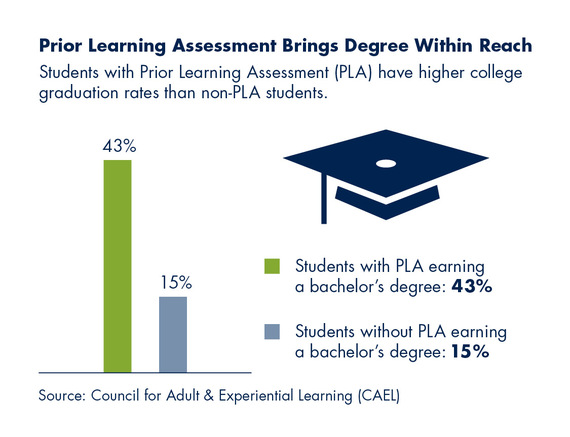Adult students going back to college often find themselves paying for coursework in classes where they are already proficient.
Consider the 30-year-old who has worked in an investment bank for five years and has earned a Series 7 license as well as taken several training courses.
Or the individual who is a licensed real estate broker with a decade of experience navigating the various laws, regulations and paper trails required to buy or sell a property.
With the median age of a college student closer to 27 than 19, according to the National Center for Educational Statistics (NCES) Digest of Education Statistics, we need to provide options that enable students to capitalize and benefit from their experience. The advent of Prior Learning Assessment (PLA) is a definite step in the right direction.
With PLA, learning achieved outside the classroom is reviewed and evaluated to determine if it meets the requirements of academic equivalency for college-level credit based on the college or university's academic programs. In the past academic year alone, we've awarded credits to nearly 1,500 students at Western International University. They appreciate not only that there is an option to leverage the skills they've learned outside the classroom but that we offer the PLA evaluation and credit award at no cost to the student.
According to a study of 48 colleges and universities by the Council for Adult & Experiential Learning (CAEL), PLA students had much higher degree-earning rates than non-PLA students, with 43 percent of PLA students earning a bachelor's degree compared with 15 percent of non-PLA students. The study found that, overall, PLA students had better graduation rates than non-PLA students regardless of an individual's academic ability or grade point average or the institution's size, level (two-year or four-year program), or type (private, for-profit, non-profit or public).
There are many methods for determining whether a student is eligible for PLA, ranging from the successful completion of professional development courses that include corporate training, professional exams or licenses and continuing education, to personal and professional experiences documented and submitted in written form for evaluation.
Learning happens inside and outside the classroom, and rewarding prior experience instead of requiring students to use both time and money to "re-learn" information makes sense. With about 20 million students attending classes at American colleges and universities this fall -- many over the age of 25 -- it is imperative that higher education institutions offer opportunities for adult students to leverage all of their expertise, regardless of where it is attained.
